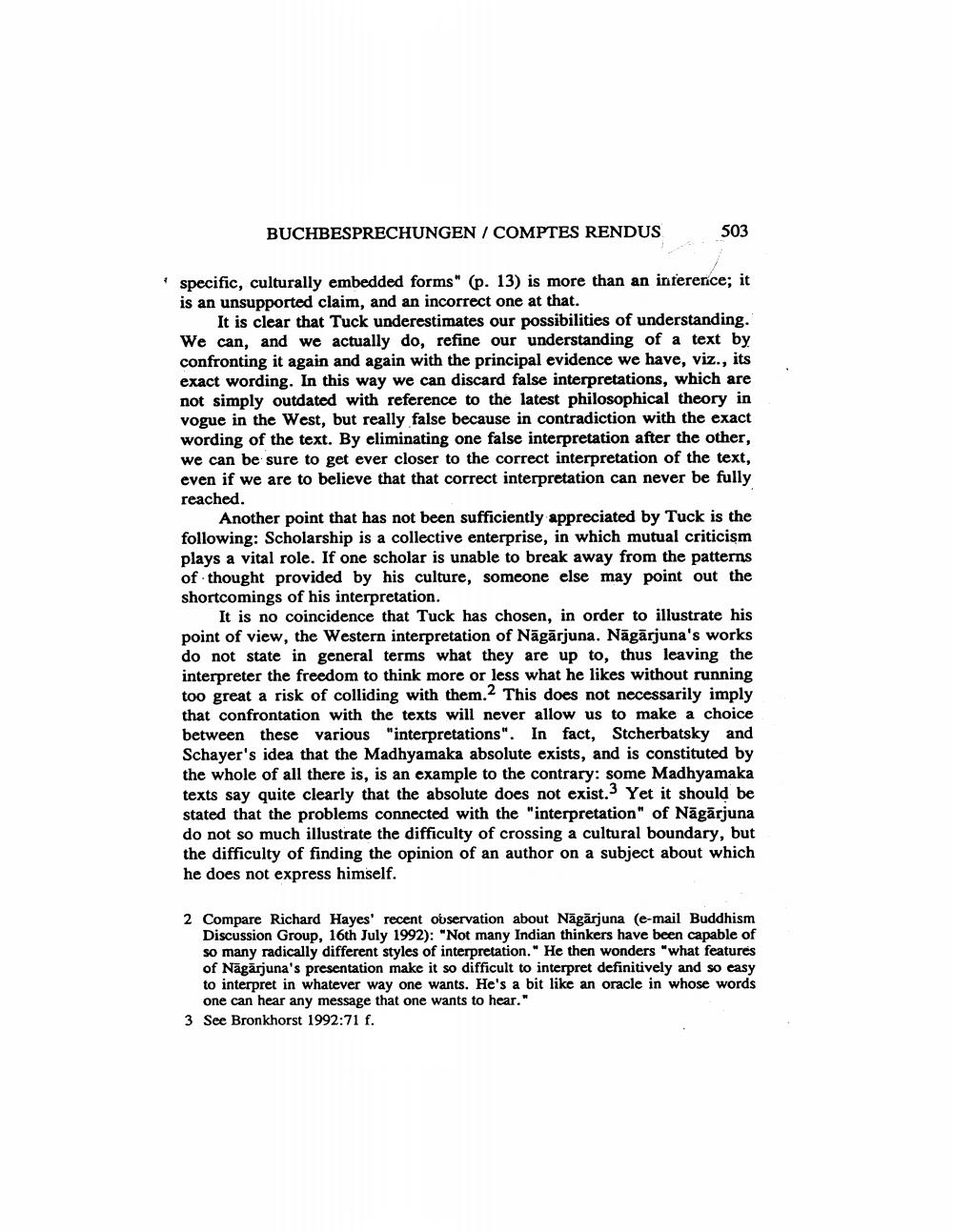________________
BUCHBESPRECHUNGEN / COMPTES RENDUS
503
specific, culturally embedded forms" (p. 13) is more than an interence; it is an unsupported claim, and an incorrect one at that.
It is clear that Tuck underestimates our possibilities of understanding. We can, and we actually do, refine our understanding of a text by confronting it again and again with the principal evidence we have, viz., its exact wording. In this way we can discard false interpretations, which are not simply outdated with reference to the latest philosophical theory in vogue in the West, but really false because in contradiction with the exact wording of the text. By eliminating one false interpretation after the other, we can be sure to get ever closer to the correct interpretation of the text, even if we are to believe that that correct interpretation can never be fully reached.
Another point that has not been sufficiently appreciated by Tuck is the following: Scholarship is a collective enterprise, in which mutual criticism plays a vital role. If one scholar is unable to break away from the patterns of thought provided by his culture, someone else may point out the shortcomings of his interpretation.
It is no coincidence that Tuck has chosen, in order to illustrate his point of view, the Western interpretation of Nāgārjuna. Nägärjuna's works do not state in general terms what they are up to, thus leaving the interpreter the freedom to think more or less what he likes without running too great a risk of colliding with them. This does not necessarily imply that confrontation with the texts will never allow us to make a choice between these various "interpretations". In fact, Stcherbatsky and Schayer's idea that the Madhyamaka absolute exists, and is constituted by the whole of all there is, is an example to the contrary: some Madhyamaka texts say quite clearly that the absolute does not exist." Yet it should be stated that the problems connected with the "interpretation" of Nāgārjuna do not so much illustrate the difficulty of crossing a cultural boundary, but the difficulty of finding the opinion of an author on a subject about which he does not express himself.
2 Compare Richard Hayes' recent observation about Nāgārjuna (e-mail Buddhism
Discussion Group, 16th July 1992): "Not many Indian thinkers have been capable of so many radically different styles of interpretation. He then wonders "what features of Nāgarjuna's presentation make it so difficult to interpret definitively and so easy to interpret in whatever way one wants. He's a bit like an oracle in whose words
one can hear any message that one wants to hear." 3 See Bronkhorst 1992:71 f.




